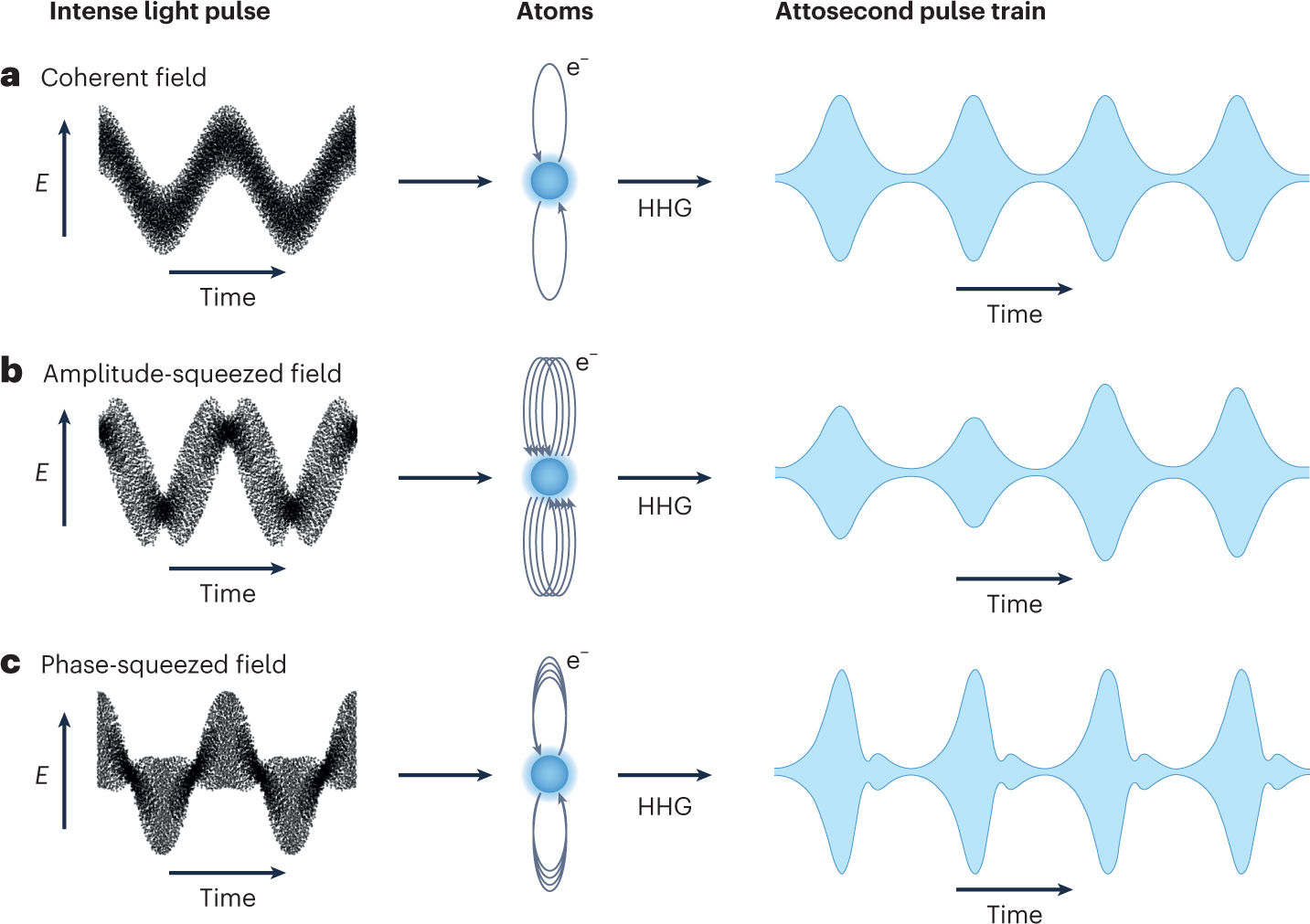Contents

Source: Wikipedia
Squeezed States of Light: Exploring Quantum Optics
Squeezed states of light, or squeezed light, represent a fascinating area of quantum optics, with experimental investigations dating back to the 1980s. These nonclassical states of light have unique properties that make them a significant subject of study in the field.
Understanding Squeezed Light
To comprehend squeezed light, one must consider the representation of light states in the optical field using complex phasors. Classically, a light state can be depicted as a phasor or its endpoint in the complex plane. In quantum optics, however, there is an inherent quantum uncertainty, meaning that any measurement of the light field’s complex amplitude will yield values within an uncertainty region.
Quantum Uncertainty and Squeezing
The uncertainty relation for the quadrature components of the light field dictates that the product of uncertainties in both components must be at least a certain quantity times Planck’s constant. Coherent states, as introduced by Glauber, have circularly symmetric uncertainty regions, resulting in minimum noise amplitudes for amplitude and phase. However, the area of this uncertainty region remains constant, irrespective of the average amplitude.
By “squeezing” the uncertainty region, one can reduce its width in one direction (e.g., amplitude) while increasing it in the orthogonal direction (e.g., phase), resulting in amplitude-squeezed light. Conversely, phase-squeezed light has reduced phase fluctuations, with increased amplitude fluctuations.
Types of Squeezed States
Squeezed states can vary in orientation and shape of their uncertainty regions. For example, photon number squeezed states reduce photon number uncertainty but may have complete phase uncertainty. Squeezed vacuum states have their uncertainty region centered at the origin, indicating zero average amplitude but non-zero photon number. Bright squeezed light, on the other hand, has a non-zero average amplitude.
Generating Squeezed Light
Squeezed light is typically generated from coherent or vacuum states through optical nonlinear interactions. An optical parametric amplifier with a vacuum input can produce a squeezed vacuum with significant noise reduction in one quadrature component. Other methods include frequency doubling, Kerr nonlinearity in optical fibers, and atom-light interactions.
Optomechanical squeezing is another technique, where radiation pressure fluctuations modulate the path length of light in an optical resonator, creating correlations between amplitude and phase noise.
Applications of Squeezed Light
Squeezed light has potential applications in various areas due to its ability to reduce quantum noise in measurements. A notable example is the detection of gravitational waves using large-scale interferometers like the advanced LIGO Hanford setup, where squeezed light technology significantly enhanced measurement sensitivity.
Despite its potential, the widespread use of squeezed light faces challenges, such as optical losses that degrade nonclassical properties. Nonetheless, squeezed states of light remain crucial in fundamental quantum optics research.
Conclusion
Squeezed states of light offer a profound insight into quantum optics, with their unique properties and potential applications making them a subject of ongoing research. As technology advances, the practical use of squeezed light in various fields may become more feasible, offering new opportunities for scientific exploration and innovation.

Source: Nature
Feel free to comment your thoughts.



